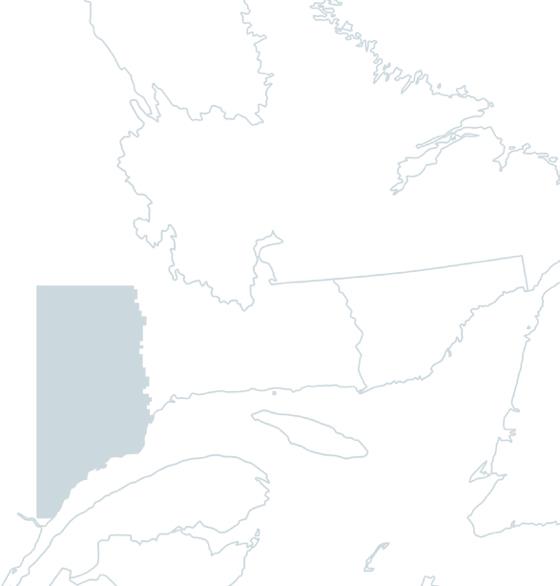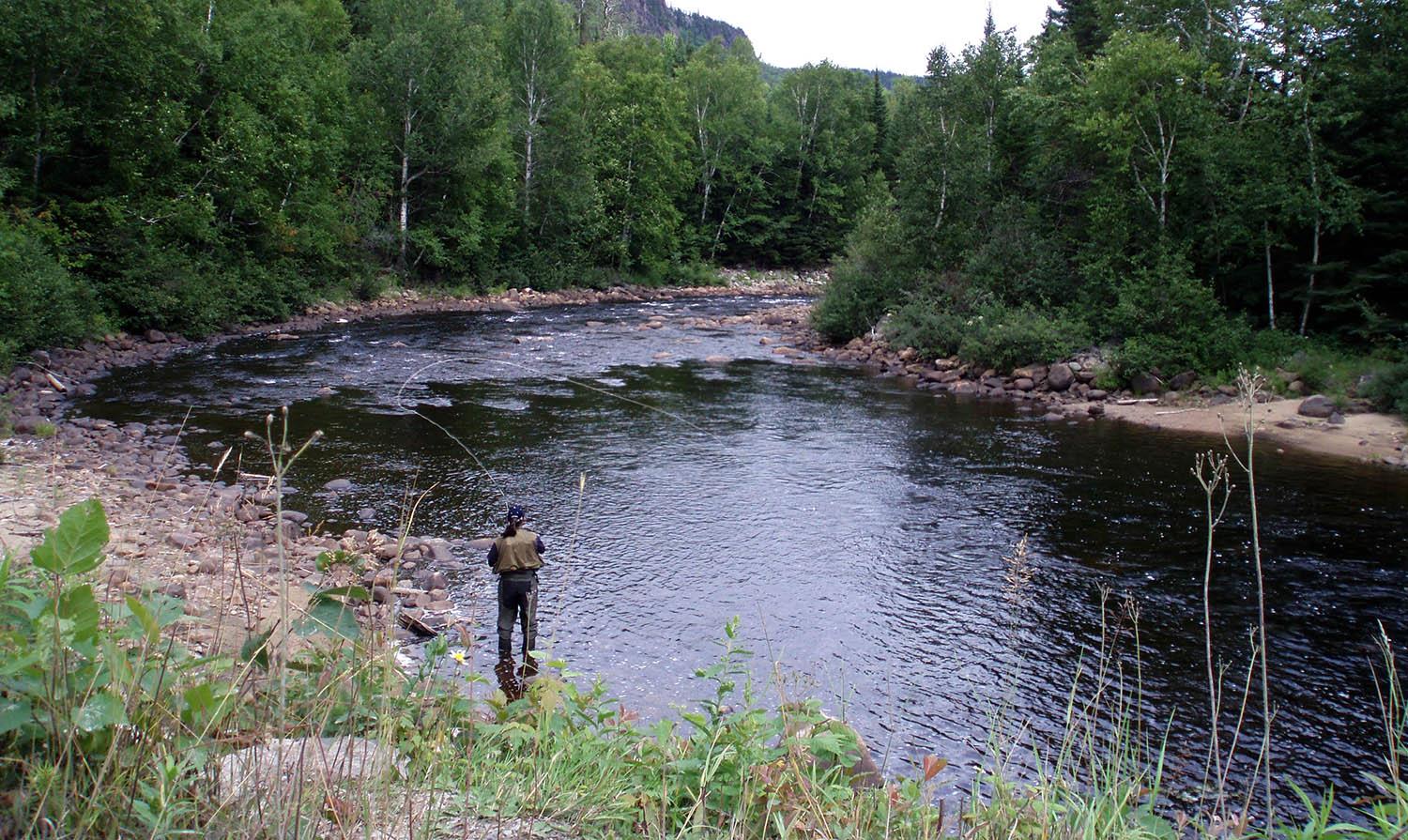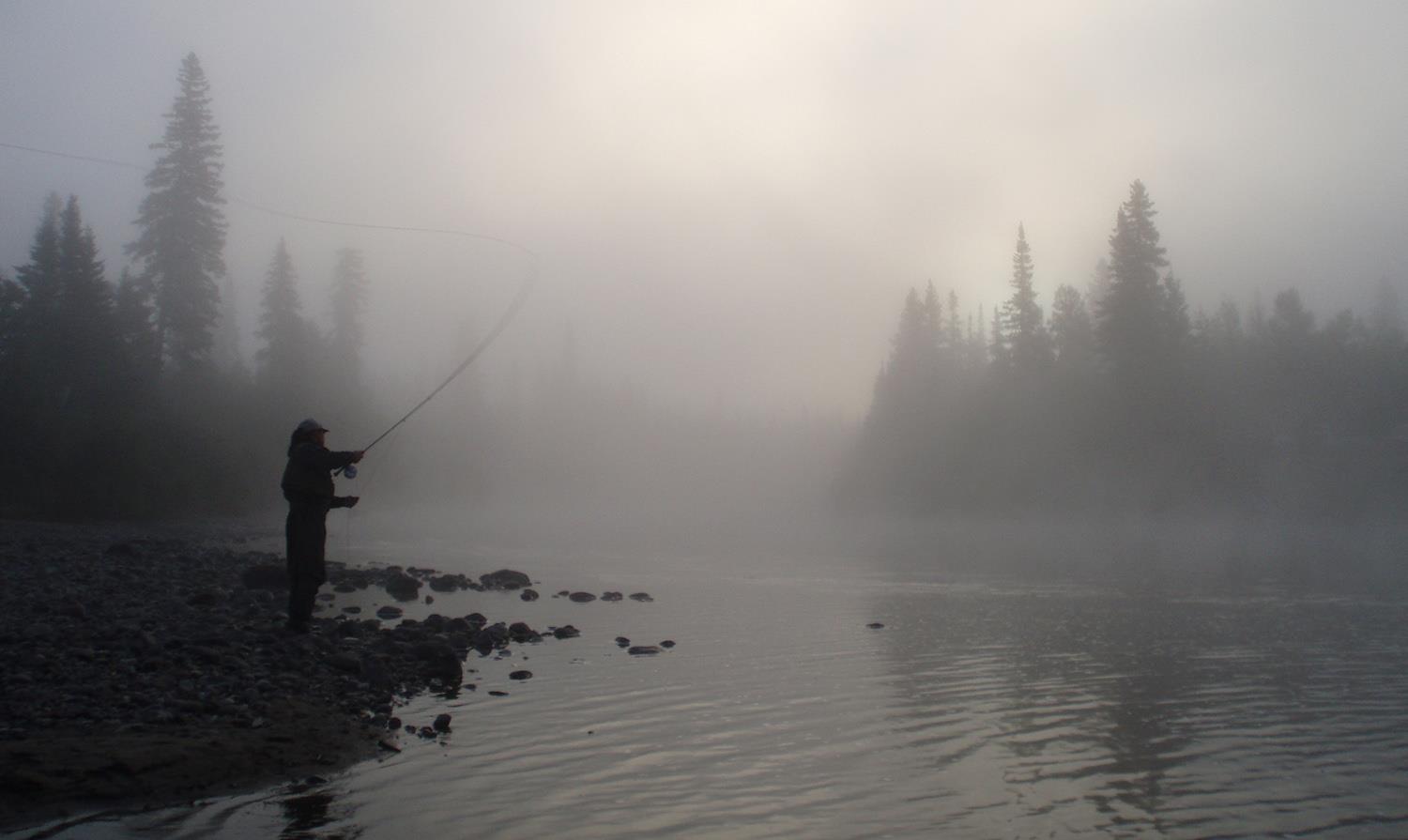Laval River
Rising from Lac Laval, an impressive 656-hectare body of water, the Rivière Laval flows north-south for 42 kilometers through a deeply incised valley, and empties into the St-Laurent, just east of the municipality of Forestville. The average weight of the salmon is almost double that of those usually caught in other North Shore rivers.
Salmon fishing rights on the Laval River long belonged to the Anglo Pulp and Paper company, before the Quebec government designated the river a wildlife reserve. Since 1980, the Forestville Hunting and Fishing Association has managed the Laval River ZEC. The river's flow is sometimes slow, sometimes fast. Significant changes in level and color occur after rainfall. As the riverbed is rather dark, the water is not very transparent, and some pools are downright black.
The Rivière Laval has 6 sectors, only 1 of which has restricted access, with a total of 67 salmon fishing pools and 45 pools for sea trout, a species found in large numbers and well above average size. You can also fly-fish for pike in Lac à Jacques, which stands out for its imposing size and almost central location on the Laval River.



